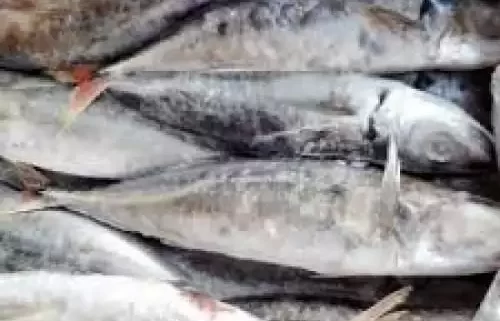horse mackerel fish
horse mackerel fish
Description
| Name of product: | Frozen Horse Mackerel |
| Latin name: | Trachurus Japonicus |
| Size: | 60-80g,80-120g,100-150g,150-200g,200-300g |
| Freezing: | BQF(BLOCK QUICK FROZEN),IQF(INDIVIDUALLY QUICK FROZEN) |
| Glazing(%) : | 0-5% |
| Packing : | Land frozen usually 10kg per block packing , Sea frozen 15 kg per block packing . |
| Shipment : | Within 5 days after the payment |
| MOQ : | 1*40FCL |
Model NO. Frozen Horse Mackerel
Delivery :FOB, CFR
Minimum order quantity:1 forty-foot container Supply
Ability:1000 forty-foot container /Year Country of Origin: Europe Stock
Time:10 Days
Characteristics & Appearance
Horse mackerel has a long, narrow body with a larger head. However, there are a few defining characteristics that allow it to be easily identified, including its color, size, and shape.
Weight & Length
The horse mackerel is a fairly lightweight fish. You should expect it to weigh about 3.3 pounds or 1.5 kilograms on average.
This fish can vary a bit in length. You’ll usually find that the common scad is about 22-25 centimeters, or 8-9 inches, long. However, it can grow as long as 60-70 centimeters, or 23-27 inches.
Physical Characteristics & Color
There are a few specific physical characteristics that make the Atlantic horse mackerel easy to identify. It has unique coloring, markings, and fin shapes, as well as a lower jaw that nearly reaches its eyes.
The horse mackerel’s color is one of its most striking physical characteristics. It typically has a silver appearance.
However, you’ll see variations around its body. The top of its body is usually a darker gray that can appear bluish-green, while the rest is a bit paler.
This fish’s fins are also quite unique. Its first dorsal fin is tall, with seven spines. The second dorsal fin is longer than the first, and the two fins are separated by a narrow gap.
One of the Atlantic horse mackerel’s identifying characteristics is a sideline that runs the length of its body from head to tail.
This line appears silver or even white and has a high curve near the head that ends at the eye, which is quite large compared to the fish’s body.
Lifespan & Reproduction
Since the Atlantic horse mackerel has such a wide migratory range, the lifespan can vary from place to place.
For example, the oldest mackerel ever found in the southern regions was 24, while the oldest found in the north was 40, indicating the environment could affect how long a mackerel can live.
Reproduction varies for the horse mackerel based on where a school is located. You’ll find that there are stocks of Atlantic horse mackerel spawning throughout most of the year in different areas. The common trends are as follows:
- Western northeast Atlantic stock spawns in early spring
- North Sea stock spawns in the summer
- Mauritania schools spawn in early to mid-winter
- Ireland schools spawn in the summer
- Females reach spawning age anywhere from 2-4 years old. They’ll spawn in 5-7 batches of about 140,000 eggs each in each season, and each larva will measure approximately 5 millimeters.The young will grow with other local schools of fish before moving on when they reach maturity.
Habitat
Although this fish gets its name from its significant presence in the Atlantic Ocean, don’t let the name mislead you. You can actually find the Atlantic horse mackerel in many of the world’s oceans and seas.
- The Atlantic horse mackerel calls the Atlantic and Indian Oceans and the Mediterranean and Black Seas home.So don’t be surprised if you encounter this fish from the coast of Norway all the way down and around the coast of South Africa.
Where Do Atlantic Horse Mackerel Live?
The Atlantic horse mackerel appears all up and down the Atlantic coast. Still, despite the differing locales, the habitats are relatively similar.
- In the winter, you’ll find schools of horse mackerel in shallow waters in the summer or at depths of up to 100-200 meters or 330-656 feet.The juvenile mackerel tend to frequent deeper waters, while the older fish swim in shallower depths.However, despite the fish’s wide distribution, most Atlantic horse mackerel catches happen in the North Sea and near Ireland.
Food & Diet
All species of mackerel swim in schools, which is also how they hunt their chosen meals. The Atlantic horse mackerel hunts a wide variety of creatures, including other fish, crustaceans, and small ocean creatures.
What Do Atlantic Horse Mackerel Eat?
Since the horse mackerel are carnivorous fish, they tend to go after shrimp, squid, smaller fish, and other crustaceans. However, small crustaceans and bony fish seem to be their most sought-after prey.




Leave a Reply
Want to join the discussion?Feel free to contribute!